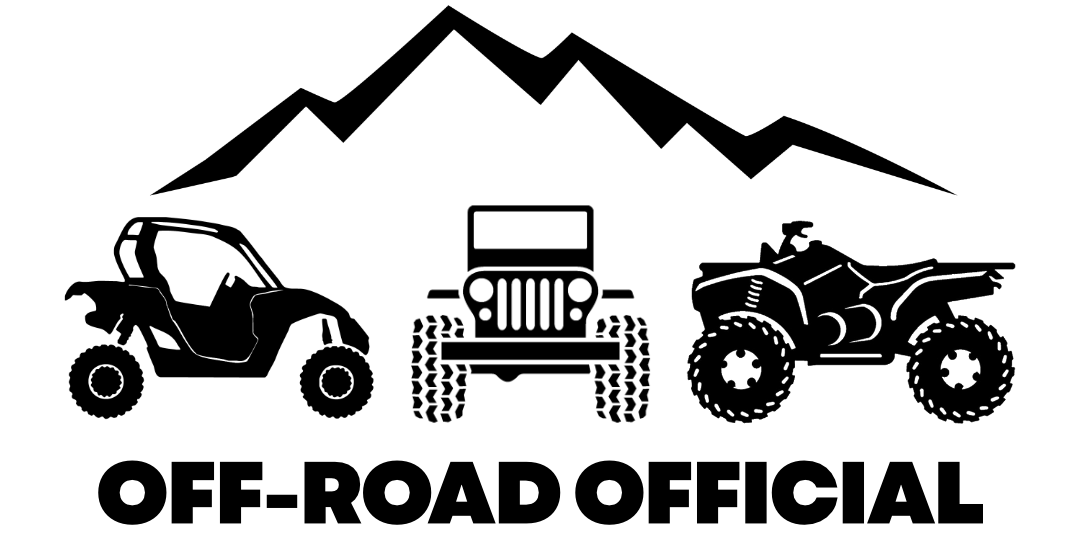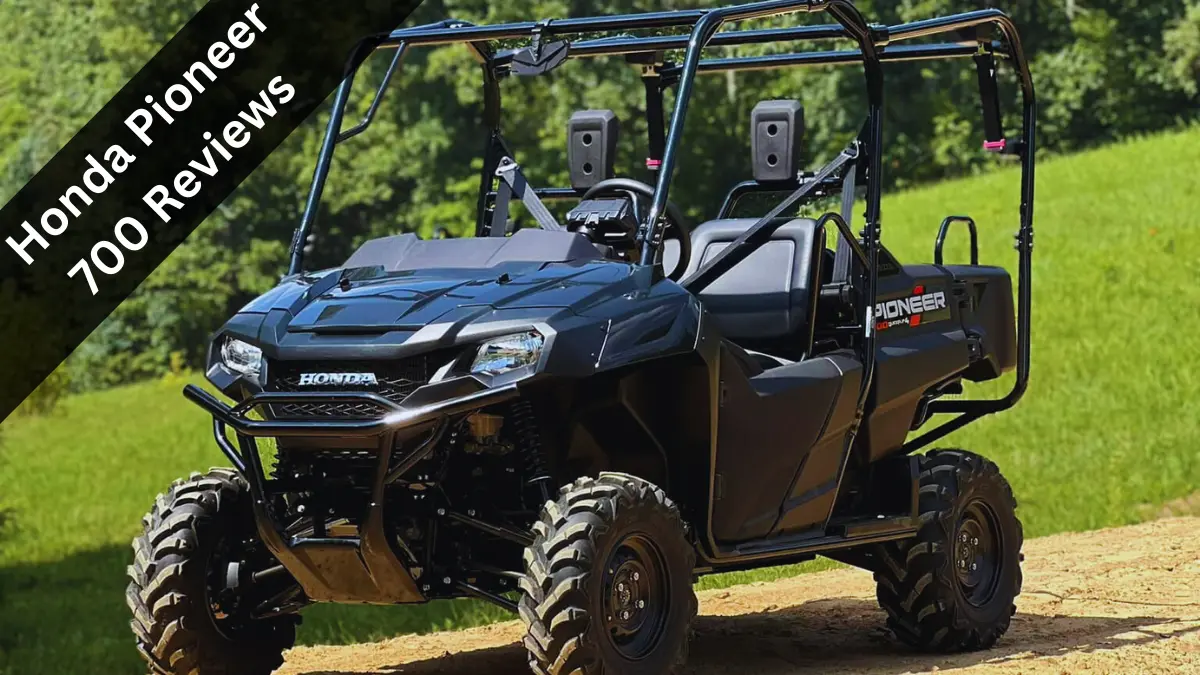When most folks think of a Honda ATV or UTV, they usually associate them with high quality, dependable machines.
And that’s exactly what you get in the Honda Pioneer 700, which is one of Honda’s most popular utility side-by-sides and ranks as one of the best UTVs for the money across the industry.
But as quality as these machines are, you might be surprised to find that there are also a number of drawbacks with Pioneer 700 models as well.
And in a class with plenty of other options to choose from, when considering paying top-dollar for a big-name side-by-side like a Honda, you really want to be sure about what you’re getting for your money.
This Honda Pioneer 700 review will detail all of the good and the bad with these models so that you can make an informed decision on whether one of these models is right for you.
You can also compare the Pioneer 700 with the rest of the line in this Pioneer 1000 review, rundown on the Pioneer 520, and review of the Pioneer 500.
This guide will focus on the following:
- 2024 models and pricing
- Big changes for 2023/2024
- Specifications
- Key features
- Performance
- What owners like
- What owners dislike
Honda Pioneer 700 Models For 2023/2024
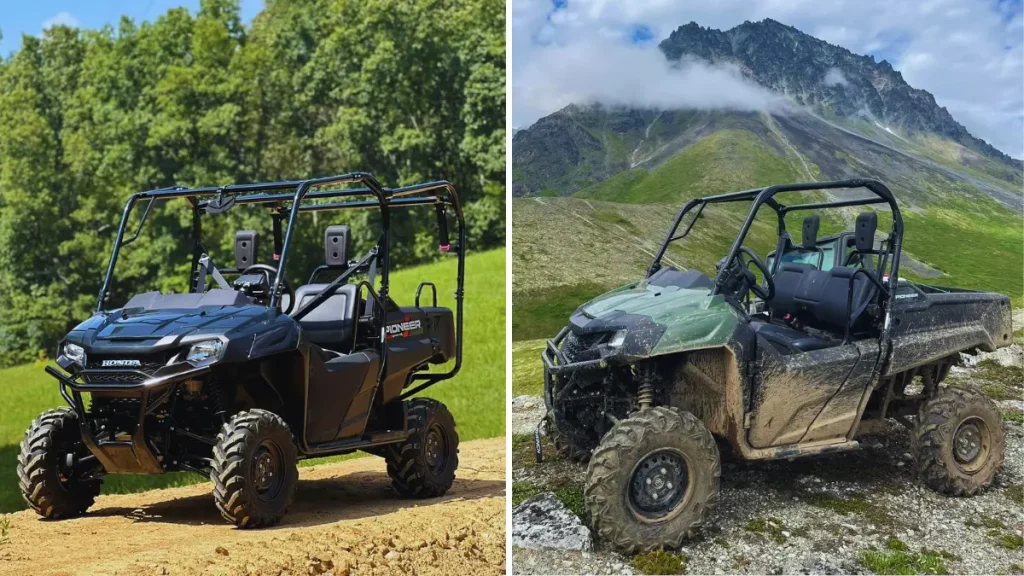
Honda Pioneer 700
The Pioneer 700 is Honda’s two-seater and features three different trim levels for 2024.
| Trim Level | 2024 Price |
| Pioneer 1000 (Base) | $11,899 |
| Pioneer 1000 Deluxe | $13,499 |
| Pioneer 1000 Forest | $15,499 |
Honda Pioneer 700-4
For those who want to bring along four riders instead of two, the Honda Pioneer 700-4 offers two additional Quickflip seats that flip up out of the rear cargo bed and fold flat when you don’t need them.
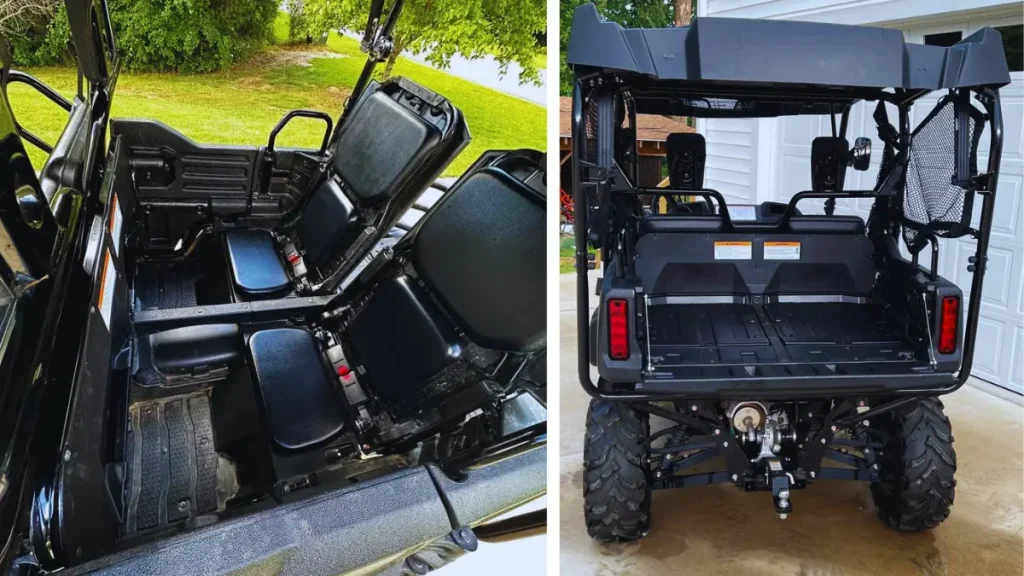
These models offer an extended roll cage that covers the rear bed/seat area as well, and they come in three different trim levels for 2024.
| Trim Level | 2024 Price |
| Pioneer 1000 (Base) | $13,399 |
| Pioneer 1000 Deluxe | $14,999 |
| Pioneer 1000 Forest | $16,999 |
Big Changes For 2023/2024
The Pioneer 700 models have remained largely the same year over year for a good, long while.
But like the Honda Pioneer 1000 saw some big changes in 2022, the Pioneer 700 models come with some welcome changes for 2023 and 2024.
- They’ve finally added a tilt-up steering wheel.
- There is more storage, with a bigger glovebox and added storage cubby on the dash.
- The cup holders in the doors are bigger to accommodate a tumbler.
- Redesigned grab bar.
- Stronger boots on the drive shafts.
- Upgraded power steering borrowed from the Pioneer 1000-5 which reduces effort by 25% and has better “return to center” than before for a very noticeable difference, even in 4WD.
- Updated LCD display and gauges.
- Bed lights now come in the Deluxe models.
Specs, Key Features & Performance
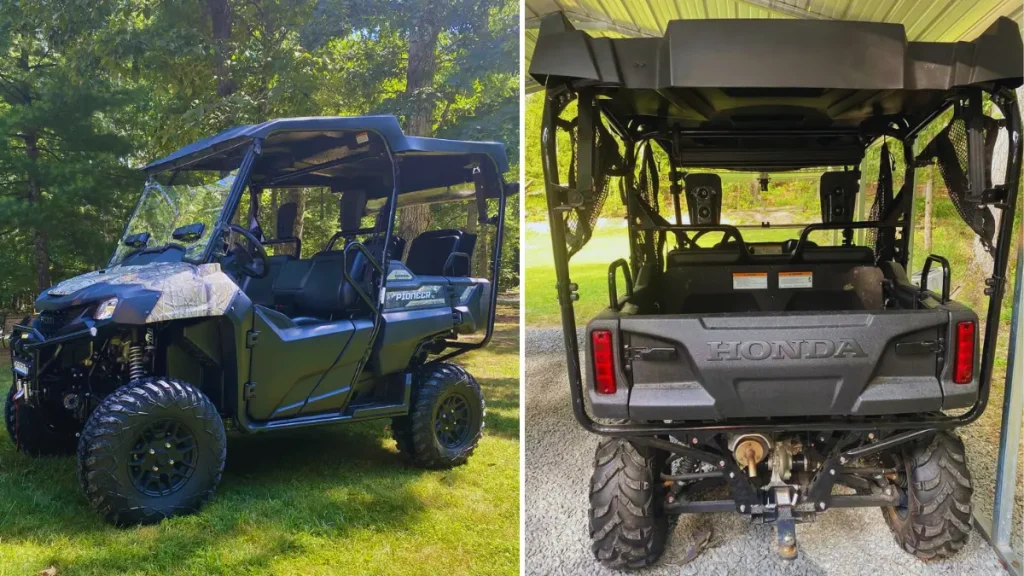
Engine
The Pioneer 700 models are powered by a 675 cc single-cylinder engine with an unimpressive max power output of 36 horsepower.
While the HP is nothing to write home about, the engine does have enough low-end grunt and overall power to perform most working tasks.
And while they aren’t meant to whip you around the trails, they are absolute billy goats and will make it up and over just about any terrain – but at more of a crawl.
Speaking of crawling, these machines are pretty lacking in top-end power and speed.
The engines aren’t built to go fast, and there’s a rev limiter that kicks in and limits this model’s top end speed to 45 mph – easily one of the slowest you’ll find in the class.
These Honda engines are very quiet and very smooth when riding, so you can easily carry on a conversation with your passenger and your ears won’t ring after a long ride.
As you’d expect from Honda, these engines are about as durable and dependable as they come.
| Engine Type | Four-Stroke, OHV |
| Cylinder Arrangement | Single Cylinder |
| Displacement | 675 cc |
| Max Horsepower | 36 HP |
| Bore x Stroke Ratio | 102 x 82.6mm |
| Compression Ratio | 9.2:1 |
| Fuel System | PGM-FI fuel injection |
| Engine Cooling | Liquid Cooling |
| Fuel Capacity | 8.1 Gallons |
Drivetrain
The Pioneer 700 models feature 2WD/4WD, along with a 4WD with locking differential setting for added traction when needed.
When you put this machine in 4WD, there’s not many terrains it can’t conquer.
One drawback is that unlike the Pioneer 1000, these models don’t offer a turf mode to keep your tires from spinning.
The transmission in these models is pretty unique, being an automotive-style three speed automatic with a hydraulic torque converter.
There is no drive belt in these models, which helps fore-go the need for maintenance in that regard. And there’s no High or Low gear to choose from.
While this is supposed to be an upgrade in theory, the lack of gears in this 3-speed leads to the power and speed you want not quite being there without feeling like you’re really pushing the engine to its max.
But this transmission does make for incredibly smooth gear shifting.
The Deluxe and Forest models offer both an Automatic and Manual mode, giving drivers the ability to make manual gear shifts using paddles behind the steering wheel if they want.
| Chassis Frame | Steel Tube |
| Drive System | 2WD/4WD w/ 4WD locking differential, Drive Shafts |
| Transmission Type | 3-Speed Automatic w/ Reverse (Manual Mode on Deluxe) |
| Gearshift | R-N-D |
Suspension
The suspension systems on the Pioneer 700 models are excellent, with independent double wishbone set-ups making for an ultra smooth ride in any terrain.
This set-up offers 7.9 inches of travel in the front and 9.1 inches in the rear.
Especially when trail riding, the suspension system does an excellent job of minimizing any jolts from chop or bumps.
The ground clearance on these models is nothing to brag about, but that’s mainly due to the size of the stock tires.
| Turning Radius | 14.8 feet |
| Wheelbase | 76.8 inches |
| Max Ground Clearance | 10.8 in |
| Front Suspension | Independent Double Wishbone |
| Rear Suspension | Independent Double Wishbone |
| Front Travel | 7.9 in |
| Rear Travel | 9.1 in |
Tires & Brakes
The Pioneer 700 models come with 25-inch tires on 12-inch wheels in the front and rear.
While the traction they provide is sufficient, these are some of the smaller tires you’ll find on a UTV in the 700cc class.
They almost make the Pioneer 700 resemble a golf cart, and also limit the amount of ground clearance on these models.
Needless to say, the tires are not one of the Pioneer 700’s most appealing models, and many owners elect to outfit theirs with something more aggressive.
The good news is that the Pioneer 700 models can handle up to 28-inch tires without the need for a lift kit.
And once you throw on some 28’s, your Pioneer will look and feel like any of the other 700cc class UTVs.
Four-wheel hydraulic disc brakes provide plenty of stopping power for these machines in any terrain or on any surface level.
| Front Tires | 25 x 8-12 |
| Rear Tires | 25 x 10-12 |
| Wheels | Stamped Steel (Base), Aluminum (Deluxe) |
| Front Brake Type | Hydraulic Disc (210 mm) |
| Rear Brake Type | Hydraulic Disc (170 mm) |
Dimensions & Capacities
The Pioneers are right in line with the industry average in terms of their overall size and dimensions.
They offer good cab space and leg room up front, but riders in the rear seats of the 700-4 will find leg room pretty cramped. These added seats are more suitable for the kiddos than adults.
And with their excellent low-end grunt, the Pioneer 700 models offer solid towing capacities of 1,500 lbs.
And the rear dumping cargo bed is quite sizable, offering a hauling capacity of up to 1,000 lbs.
| 2-Seaters | 4-Seaters | |
| Length | 114.8 in | 114.8 in |
| Width | 59.9 in | 59.9 in |
| Height | 77.6 in | 77.9 in |
| Curb Weight | 1,292 lbs | 1,433 lbs |
| Towing Capacity | 1,500 lbs | 1,500 lbs |
| Cargo Bed Capacity | 1,000 lbs | 1,000 lbs |
What Owners Like
- Nothing cheap about these models – very well-made.
- The engine is easily accessible below the rear dump bed for performing maintenance.
- Excellent low-end grunt gives them the ability to knock out just about any working task and crawl up the steepest terrain/trails.
- Power steering in Deluxe models has been upgraded and makes for easy handling and control.
- The padded seats are very comfy on your rear end, regardless of the terrain.
- Excellent towing and hauling capacities.
- The 700-4 cargo beds convert from added seating to cargo/dump functions, with the side panels serving as doors that open from the inside to allow passengers out easily.
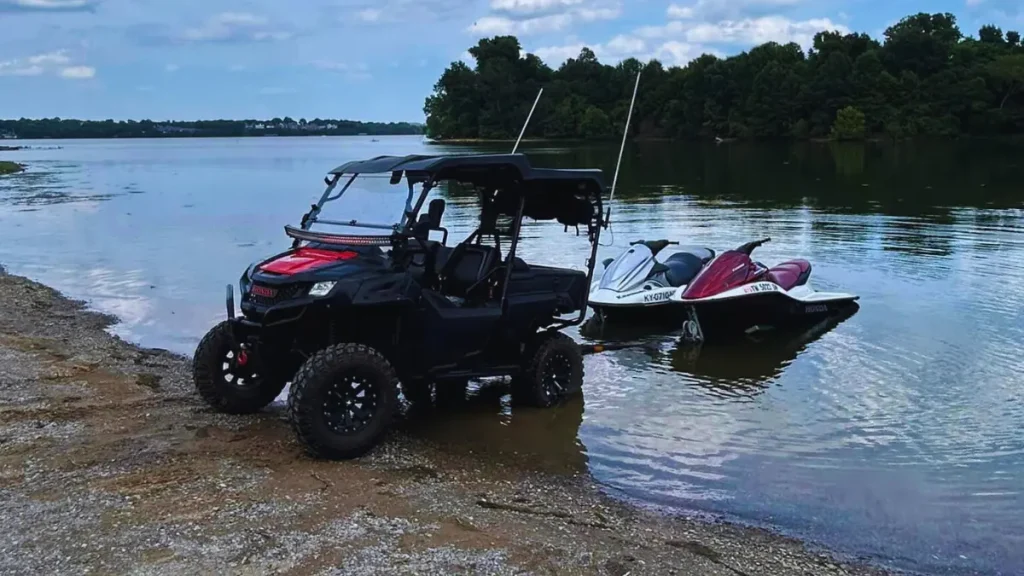
What Owners Dislike
- There is no turf mode in these models like you’ll find in the Pioneer 1000 models.
- The rear seats in the Pioneer 700-4 are more equipped for kids than for adults, with the leg room pretty cramped.
- The only cup holders are located on the inside door paneling, which is inconvenient.
- The storage space is limited, even with the increased space for 2023/2024.
- The plastic roof has a design flaw where the middle indented area can accumulate rain water when not under cover, which then flows down into your lap when you accelerate.
- The key position is near your knees and low enough that you can accidentally bump it to the off position while riding.
- The seat belt safety feature requires the driver’s belt to be buckled to get the machine out of limp mode, which is annoying when working around the property.
Final Word
When it comes to basic trail riding, the Honda Pioneer 700 is one of the most well-rounded side-by-sides you can own.
And these models are about as high-quality as they come.
That said, they don’t offer the same performance and speed as some of the other models in the 700 class and do have some limitations.
To see how they stack up with some of their main competitors, check out the following before you go:
